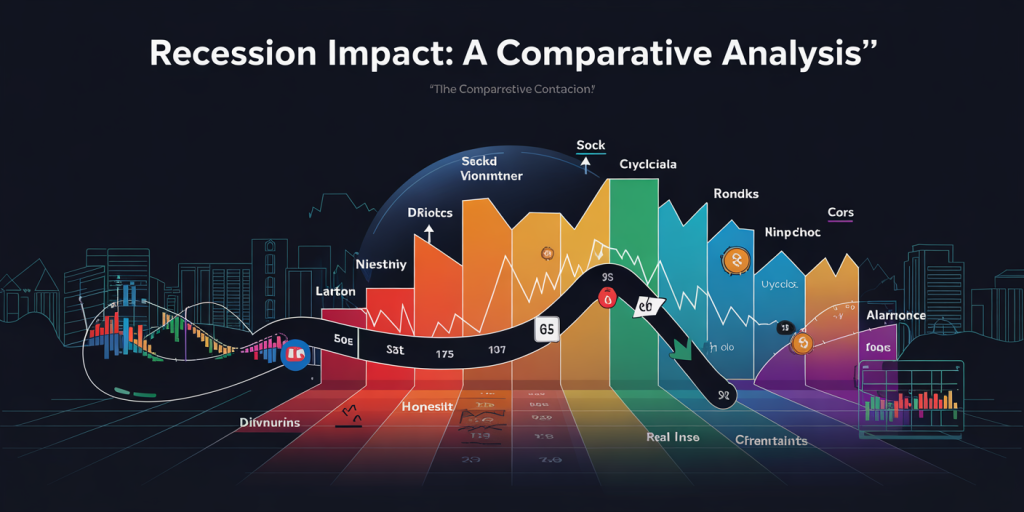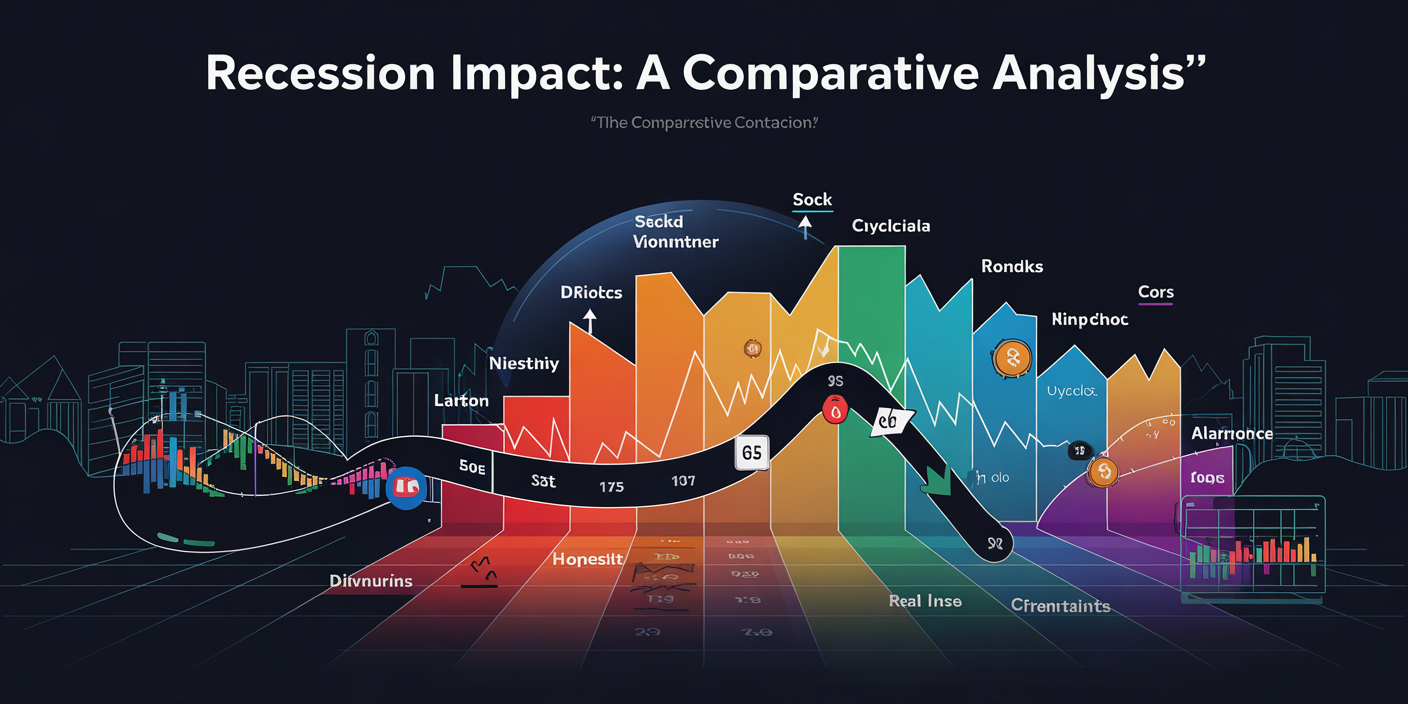Economic recessions are periods of significant decline in economic activity across the economy lasting more than a few months. During these challenging times, investors often ask: what really happens to my investments, and how can I make informed decisions to protect or grow my wealth? Understanding the behavior of various asset classes and the underlying market dynamics during a recession can empower investors to navigate volatile financial landscapes with confidence.
The Economic Context: How Recessions Impact Markets
Recessions typically involve a contraction in gross domestic product (GDP), rising unemployment, reduced consumer spending, and declining corporate profits. These macroeconomic conditions invariably exert pressure on financial markets. Between 1945 and 2020, the U.S. economy experienced 13 recessions, with varying depths and durations, such as the 2008 Global Financial Crisis and the COVID-19-induced recession in 2020.

During recessions, stock markets generally experience heightened volatility and declining prices. For example, during the 2008 recession, the S&P 500 dropped approximately 57% from its peak in October 2007 to its trough in March 2009. This downturn was largely driven by reduced consumer confidence, lower corporate earnings, and credit tightening. However, not all investments respond identically. To truly grasp the impact on your portfolio, one must analyze sector-specific performance, asset classes, and investor behavior patterns.
Equity Investments: Volatility and Sector Divergence
Stocks often bear the brunt during recessions. Typically, equity investments see price declines as earnings deteriorate and economic uncertainty rises. However, the extent of impact varies by sector and company fundamentals. Cyclical industries such as consumer discretionary, financials, and industrials tend to suffer more pronounced declines due to their dependence on economic growth. For instance, during the 2008 recession, the financial sector lost nearly 55% of its market value by March 2009.
Conversely, defensive sectors like healthcare, utilities, and consumer staples exhibit more resilience. These industries provide essential goods and services that maintain demand regardless of economic conditions. For example, during the 2020 COVID-19 recession, the healthcare sector outperformed, with many stocks such as Johnson & Johnson and Pfizer showing relative strength as public health became paramount.
| Sector | Average Stock Price Decline (2008-2009) | Resilience During COVID-19 (2020) |
|---|---|---|
| Financials | -55% | -30% |
| Consumer Discretionary | -50% | -25% |
| Industrials | -45% | -28% |
| Healthcare | -15% | +5% |
| Utilities | -10% | +3% |
| Consumer Staples | -12% | +2% |
Stock prices may bottom out before the economic recovery begins, offering buying opportunities for long-term investors. Dollar-cost averaging during downturns helped many investors accumulate wealth in the post-recession market expansion.
Fixed Income: The Safety Net During Economic Downturns
Bonds and other fixed-income securities are traditionally viewed as safer investments during recessions. Government bonds, especially U.S. Treasuries, are considered safe havens. When economic growth slows, central banks often cut interest rates to stimulate activity, which drives bond prices up due to the inverse relationship between interest rates and bond prices.
During the 2008 recession, 10-year U.S. Treasury yields dropped from around 4% in early 2008 to about 2.4% in early 2009, causing the price of existing bonds with higher yields to rise. Investors flocked to such assets seeking capital preservation. Similarly, in the 2020 COVID-19 recession, the Federal Reserve slashed rates to near zero, driving demand for bonds higher.
However, corporate bonds are more sensitive to economic downturns. High-yield or “junk” bonds suffer more as the risk of default rises with declining corporate profits and cash flows. Moody’s reported that corporate bond defaults surged to 6.2% in 2020 from 3.1% in 2019. Investors need to evaluate credit quality carefully in recessionary environments.
The table below compares bond performance in recessions:
| Bond Type | Yield (%) Before Recession | Yield (%) During Recession | Price Trend |
|---|---|---|---|
| U.S. Treasury 10-year | 4.0 | 2.4 | Price increase |
| Investment-grade Corporate | 5.0 | 6.0 | Modest decline |
| High-yield Corporate | 8.0 | 12.0 | Significant decline |
Real Estate and Alternative Investments: Mixed Outcomes
Real estate investments can be hit or miss during recessions depending on location, type, and market dynamics. Residential real estate markets, for example, contracted sharply during the 2007-2009 subprime mortgage crisis, which triggered the recession itself. Home prices in the U.S. fell by about 30% on average during that period, severely impacting real estate investment trusts (REITs) and property owners.
However, commercial real estate may demonstrate resilience in certain segments. For example, industrial and warehouse properties supporting e-commerce showed steady demand even amid downturns. The 2020 recession saw retail-focused REITs decline, while industrial REITs held value or grew.
Gold and other precious metals typically serve as safe-haven investments during economic uncertainty. Gold prices surged from around $800 per ounce in 2008 to over $1,500 by 2011, reflecting investor flight to tangible assets. Cryptocurrencies, being relatively new, showed mixed results. Bitcoin, for example, experienced heightened volatility but started gaining recognition as a hedge.
The table below summarizes alternative investment performance during recessions:
| Asset Class | 2008-2009 Performance Change | 2020 Recession Performance |
|---|---|---|
| Residential Real Estate | -30% | -5% |
| Commercial Real Estate (Industrial) | -10% | +8% |
| Gold | +25% | +15% |
| Cryptocurrencies (Bitcoin) | Not Applicable | Volatile (±30%) |
Investor Behavior and Market Psychology
Recessions amplify market fear and uncertainty, often triggering emotional and sometimes irrational investment decisions. Behavioral finance studies highlight the “panic selling” phenomenon where investors rush to liquidate stocks to avoid losses, further driving prices down. Retail investors were notably active during the COVID-19 market crash in March 2020, leading to sharp, swift sell-offs.

However, professional investors often follow contrarian strategies during recessions, buying undervalued stocks and assets while prices are depressed. Warren Buffett famously invested heavily in quality stocks during the 2008 crisis, buying shares in Goldman Sachs and General Electric when markets tumbled.
Market recoveries are seldom linear. The S&P 500 took approximately four years to fully recover from the Great Recession lows, but gained 200% in the decade following that recovery. Such historical patterns emphasize the value of patience and discipline during recessions.
Preparing for the Future: Strategic Investment Approaches
Looking ahead, recessions will inevitably recur as part of the economic cycle, influenced by diverse factors such as geopolitical tensions, pandemics, or policy missteps. Investors can apply several strategies to minimize risks and capitalize on opportunities during future downturns.
Diversification remains a cornerstone. A portfolio combining equities, bonds, real estate, and alternatives spreads risk and smoothes volatility. Our earlier tables demonstrate how differing asset classes react, reinforcing why balance is crucial.
Focus on quality investments. Companies with strong balance sheets, steady cash flows, and resilient business models often fare better and recover faster. Defensive sectors, as noted, generally withstand recessions better.
Maintain liquidity to exploit buying opportunities at lower valuations. Having cash or cash-equivalent assets available during market sell-offs enables investors to purchase undervalued assets, potentially boosting long-term returns.
Utilize tax-advantaged accounts to optimize after-tax gains, especially when harvesting losses during downturns to offset capital gains.
Technological advances and data analytics also permit more dynamic portfolio management. Artificial intelligence and machine learning aid in identifying recession indicators and adjusting asset allocations promptly.

Summary Table: Key Strategies for Investment During Recessions
| Strategy | Purpose | Example/Application |
|---|---|---|
| Diversification | Risk reduction | Mix of stocks, bonds, real estate |
| Quality Focus | Stability and recovery potential | Invest in healthcare, utilities |
| Liquidity Maintenance | Flexibility to buy in downturns | Keep cash reserves or money market funds |
| Tax Planning | Maximize after-tax returns | Tax-loss harvesting |
| Dynamic Management | Adaptive allocation based on data | Using AI for market trend analysis |
By adopting these strategies and staying informed about economic trends, investors are better positioned to weather the inevitable storm of recessions and emerge financially stronger.
—
Recessions test an investor’s resolve and strategy. Although economic contractions often lead to declines in most investment portfolios, understanding the nuances behind asset performance, sector behavior, and market psychology can transform uncertainty into opportunity. Historical data encourages investors to remain patient, disciplined, and proactive in managing their investments, ensuring resilience and success across business cycles.

Deixe um comentário